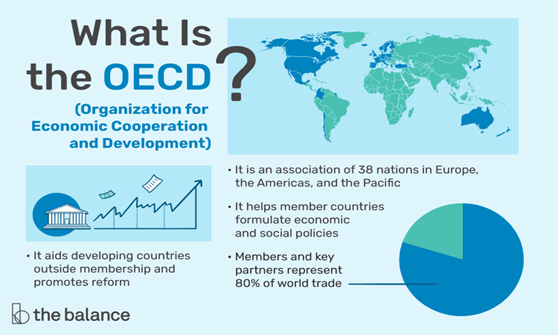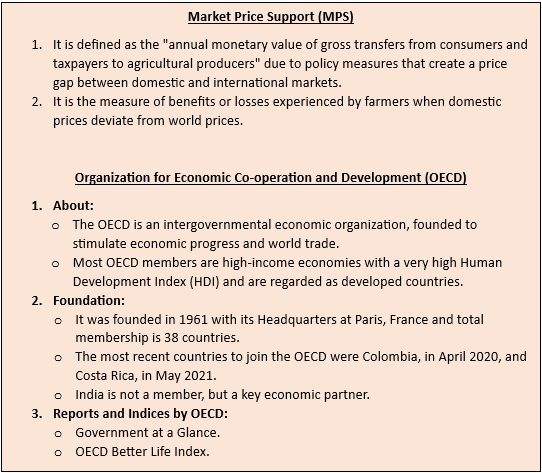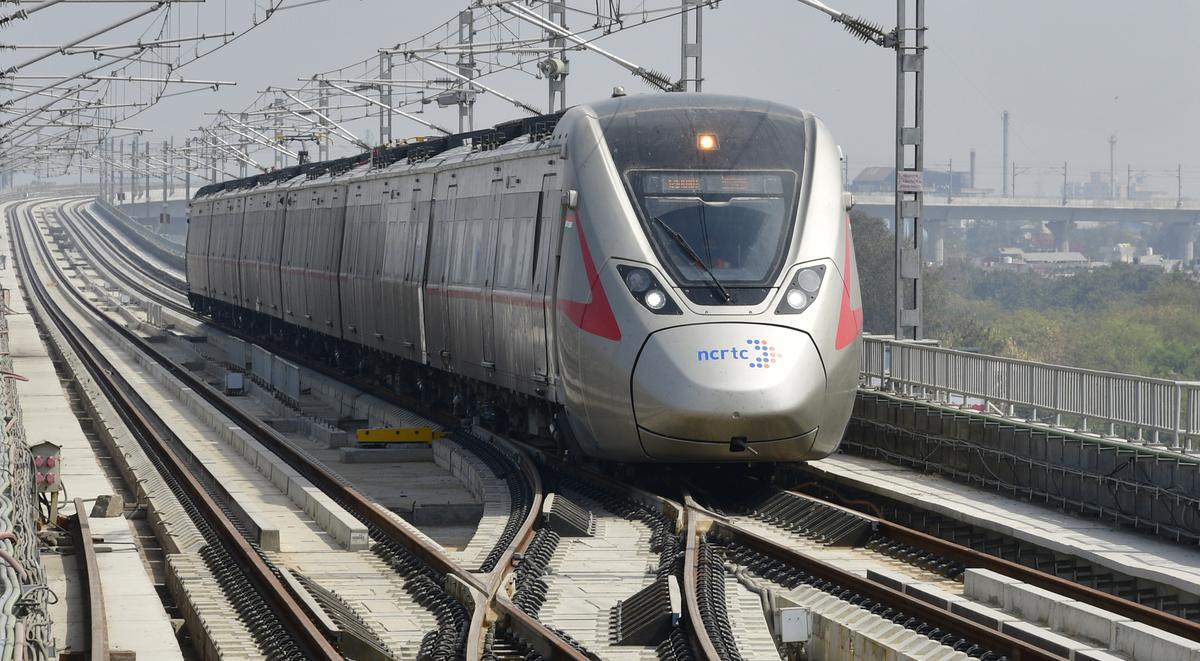- Courses
- GS Full Course 1 Year
- GS Full Course 2 Year
- GS Full Course 3 Year
- GS Full Course Till Selection
- Online Program
- GS Recorded Course
- NCERT (Recorded 500+ Hours)
- Polity Recorded Course
- Geography Recorded Course
- Economy Recorded Course
- AMAC Recorded Course
- Modern India, Post Independence & World History
- Environment Recoded Course
- Governance Recoded Course
- Science & Tech. Recoded Course
- International Relations and Internal Security Recorded Course
- Disaster Management Module Course
- Ethics Recoded Course
- Essay Recoded Course
- Current Affairs Recoded Course
- CSAT
- 5 LAYERED ARJUNA Mentorship
- Public Administration Optional
- ABOUT US
- OUR TOPPERS
- TEST SERIES
- FREE STUDY MATERIAL
- VIDEOS
- CONTACT US
OECD Report Highlights Taxation of Indian Farmers
OECD Report Highlights Taxation of Indian Farmers
02-11-2023

Context
The OECD's 2023 report on Agricultural Policy Monitoring and Evaluation reveals the implicit taxation of Indian farmers in 2022.
Key Highlights of the Report
- India's Negative MPS Dominance:
- The OECD analysis examined 54 nations, with India's negative Market Price Support (MPS) responsible for more than 80% of these taxes worldwide in 2022.
- Approximately USD 200 billion was the total implicit taxation for farmers in the 54 countries. India is a prominent role in this scenario, with the implicit levy imposed on Indian farmers reaching an astounding USD 169 billion.
- Offset Attempts in Emerging Economies:
- Through budgetary support, several emerging economies that had negative MPS were able to balance it.
- In India, however, the price-depressing effects of trade policy measures and domestic marketing regulations were not countered by various budgetary transfers to farmers in the form of substantial subsidies for variable input use, such as fertilizers, electricity, and irrigation water, known as PM-KISAN (Pradhan Mantri Kisan Samman Nidhi).
- Impact on Indian Farmers:
- Although budgetary transfers made only 11% of total farm receipts, various commodities had negative MPS amounts of 27.5%.
- Concerningly for Indian farmers, this disparity led to an overall negative net support of 15% of gross farm income.
- Export Policies in 2022:
- India imposed export restrictions, tariffs, and licenses on a number of goods in 2022, mostly in reaction to the conflict in Ukraine and the heatwave that year.
- The intention of these policies was to keep domestic prices stable, but the result was a decrease in farmers' profits.
- These export regulations affected a variety of commodities, including rice, wheat, sugar, onions, and associated goods like wheat flour.
- Export limitations worsened the ongoing issue of poor agricultural incomes and had a direct impact on India's dependability as a supplier.
- These regulations affected the nation's standing as a major agricultural producer on the international stage in addition to home markets.
- Global Perspective:
- In 2020–2022, producer support to the agriculture sector in 54 countries was valued at USD 851 billion annually, according to an OECD report. The substantial increase is attributed to responses to the Covid-19 outbreak, inflationary pressures, and the aftermath of the Ukraine war.
- Potential for Distortion:
- Among the 54 countries, two thirds of the positive support given to producers took the form of measures deemed "potentially most distorting" to trade and output.
- These payment models include output-based compensation and unrestricted usage of variable inputs, which can result in ineffectiveness and a lack of focused assistance.
- International Disparities:
- Potentially more distorting policies were implemented by emerging economies between 2020 and 2022, resulting in both implicit taxes (6% of gross agricultural payments) and positive support to producers (10% of gross farm receipts).
- OECD nations, on the other hand, did not implicitly tax producers while having a lower level of potentially distorting policies.
India’s Initiatives Related to Farmers
- The Pradhan Mantri Kisan Samman Nidhi (PM-KISAN)
- Kisan Credit Cards (KCC)
- Mission Organic Value Chain Development for North Eastern Region (MOVCDNER)
- National Mission on Sustainable Agriculture
- Paramparagat Krishi Vikas Yojana (PKVY)
- Sub-mission on AgroForestry (SMAF)
- Rashtriya Krishi Vikas Yojana
- AgriStack
- Digital Agriculture Mission
Q. In India, which of the following can be considered as public investment in agriculture? (UPSC-2020)
- Fixing Minimum Support Price for agricultural produce of all crops
- Computerization of Primary Agricultural Credit Societies
- Social Capital development
- Free electricity supply to farmers
- Waiver of agricultural loans by the banking system
- Setting up of cold storage facilities by the governments
Select the correct answer using the code given below:
(a) 1, 2 and 5 only
(b) 1, 3, and 4 and 5 only
(c) 2, 3 and 6 only
(d) 1, 2, 3, 4, 5 and 6
Ans:C



